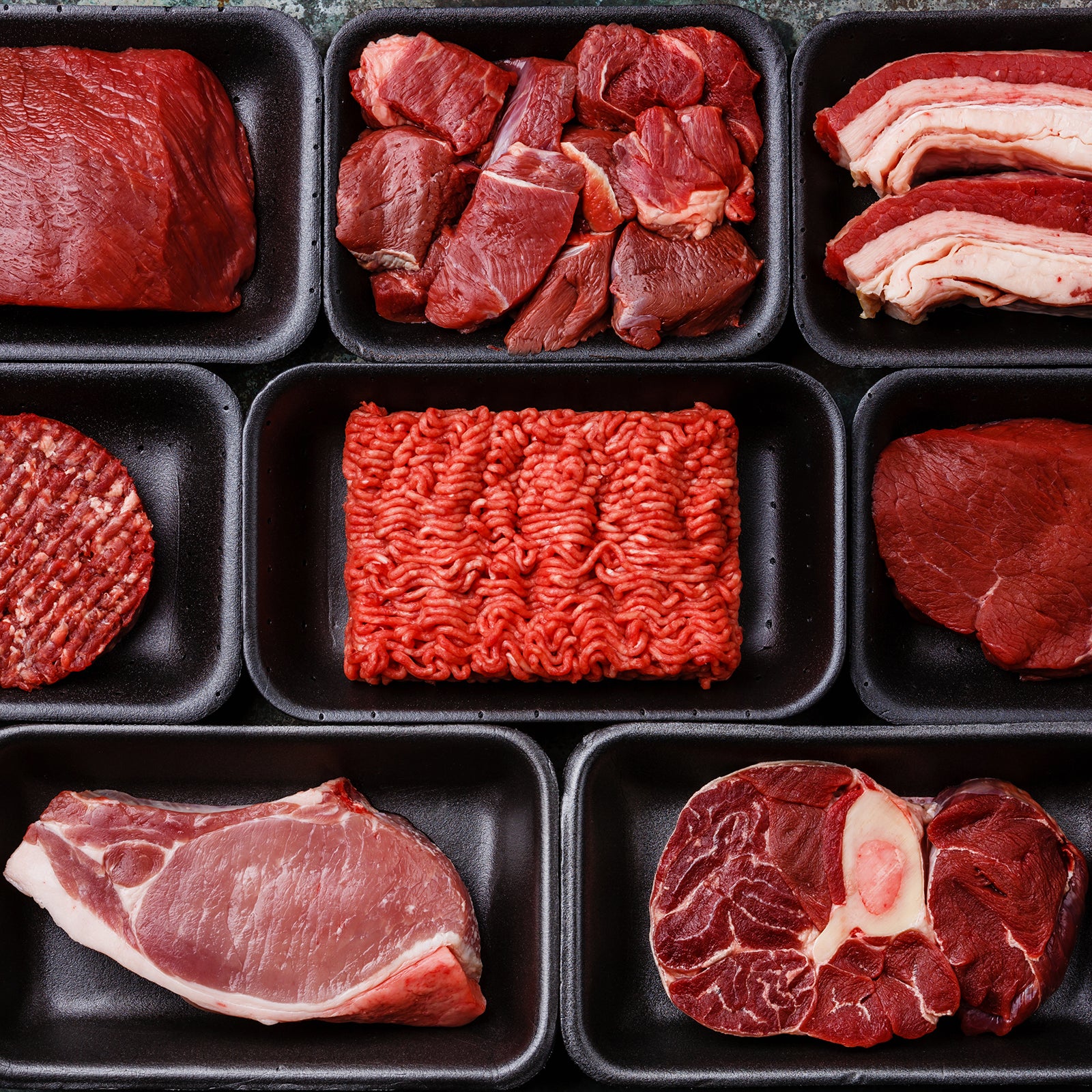Last week┬Āa new study┬Ācame out┬Āthat questioned┬Āthe long-standing recommendation to eat less red meat.╠²Maybe youŌĆÖre confused, or maybe youŌĆÖre just rolling your eyes at yet another┬Āround of contradicting ideas about what good nutrition looks like. Both reactions are warranted. Dozens of nutrition scientists are up in arms about the studyŌĆÖs conclusion, while┬Āothers argue that it┬Ādoes a public good to┬Āillustrate┬Āthe shaky and inconclusive nature of┬Āthe science behind dietary guidelines.╠²HereŌĆÖs what you need to know about what that study actually found┬Āand whether or not you should worry about it.
Old Research Can Support New Ideas┬Ā
┬Āpublished in Annals of Internal Medicine on October 1┬Āconcluded that the current public-health recommendation┬Āto eat less red┬Āand processed meat isnŌĆÖt backed by strong evidence,┬Āand it went on to make┬Ānew recommendations: that adults 18 years or older do not need to monitor or limit┬Ātheir consumption of red meat or processed meat.╠²
The article┬Āincluded five papers,┬Āeach┬Āa systematic review or meta-analysis of past studies. So┬Āthe┬Āresearchers (there were nearly 20 of them, from institutions across the globe)┬ĀdidnŌĆÖt collect new data, they just analyzed┬Āthe data that already exists. These types of papersŌĆöin which┬Āresearchers use existing data instead of collecting their ownŌĆöare very common, especially in nutrition. (A controversial study that came out earlier this year, claiming that eggs are┬Ābad for you, was also a meta-analysis.) ŌĆ£What these researchers did is use an evaluation tool to look at the strength of the data on the association between red-meat consumption┬Āand mortality and disease risk,ŌĆØ says , nutrition professor emeritus at the University of Illinois. And they concluded┬Āthat the existing evidence is very weak.
Unsurprisingly, a lot of nutrition experts werenŌĆÖt thrilled at this attack on current dietary guidelines. A statement issued by┬ĀHarvardŌĆÖs T.H. Chan School of Public Health argued: ŌĆ£The publication of these studies and the meat guidelines in a major medical journal is unfortunate because following the new guidelines may potentially harm individualsŌĆÖ health, public health, and planetary health.ŌĆØ The post went on to point out that this studyŌĆÖs analysis of 70 previous cohort studies, including a total of over six┬Āmillion participants, did show an association between red-meat consumption and chronic disease risk. The thing is, no one is arguing that this association doesnŌĆÖt existŌĆösimply that this association might not mean what we think it does.
Correlation Is Not Causation┬Ā
Large cohort studies use whatŌĆÖs called a risk ratio, to evaluate how much your behavior influences your likelihood to experience┬Āa certain negative outcome. These studies have found a positive correlation between red-meat consumption and disease riskŌĆöbut itŌĆÖs small. ŌĆ£The risk ratio for smoking and lung cancer is a 12, for example, and the risk ratio for red meat and heart disease is about one and two-tenths,ŌĆØ Layman says.╠²
Although this ratio isnŌĆÖt huge, it still warrants more in-depth studies. ŌĆ£Large cohort studies canŌĆÖt prove cause and effect, they can just generate hypotheses,ŌĆØ┬ĀLayman says. The problem, he explains, is that follow-up researchŌĆörandomized control trials (RCTs),┬Āclinical trials, experimental animal trials, and moreŌĆöhasnŌĆÖt been able to prove the┬Āred-meat hypothesis. So while we┬Āknow that red meat and cancer risk are correlated, no study has been able to prove causation.
Proving Causation Is Almost Impossible
While RCTsŌĆöwhich include a control group to measure againstŌĆöcan show cause and effect, itŌĆÖs really hard to design a proper nutrition study this way. ŌĆ£If you have someone eat less red meat, they will invariably replace it with something else,ŌĆØ says Brian St. Pierre, a registered dietitian and director of performance nutrition at . So┬Āhow do you know whether their eventual outcome is due to eating less meat┬Āor due to whatever foods they used to replace meat? Plus, with dietary intervention, thereŌĆÖs no way to control for the placebo effect. For these reasons, RCTs are relatively rare in nutrition research, which is why we rely so much on observational studies.╠²
Population Health Is Not Individual Health
One of the arguments against the new study is that, even though the evidence for causation isnŌĆÖt there yet,┬Āthe┬Āassociation between red-meat consumption and disease risk at┬Āthe population level is well proven and still relevant. For example, the existing body of research shows that lowering red-meat consumption by three servings a week could lead to six fewer heart attacks per 1,000 people. And sure, that does seem relevant when youŌĆÖre thinking about public health. But,┬ĀLayman asks, ŌĆ£What does that really mean in an individualŌĆÖs life? ItŌĆÖs hard to say. Does that add six days to your life? Six months? Six years?ŌĆØ We donŌĆÖt know.
Why even have dietary guidelines┬Āthen? Because people are looking for advice. ŌĆ£NASA waited until we had a good understanding of the science before┬Āsending a man to the moon,ŌĆØ Layman says.╠²ŌĆ£Unfortunately, with nutrition, people canŌĆÖt wait. TheyŌĆÖre eating today.ŌĆØ But┬Āhis advice is to mostly ignore the nitty-gritty of dietary guidelines and nutrition research. ŌĆ£Eat a variety of foods, and donŌĆÖt eat too many calories,ŌĆØ he says. ŌĆ£ThatŌĆÖs by far the healthiest thing you can do.ŌĆØ┬Ā
St. Pierre agrees, saying that when you look at the full body of nutrition research, itŌĆÖs clear that there are many different ways to eat healthy. ŌĆ£The first step for most is to begin to eat more whole, minimally processed foodsŌĆöboth plant and animal-basedŌĆöand fewer ultraprocessed foods.ŌĆØ┬Ā
DonŌĆÖt Overthink It
The biggest┬Āissue with dietary guidelines isnŌĆÖt what they have to say about one specific foodŌĆöitŌĆÖs the fact┬Āthat┬Āmost people donŌĆÖt follow them anyway.╠²Only about eat the recommended five servings of fruits and vegetables a day. The most state that most┬Āpeople eat more than the recommended amount of┬Āgrains, protein, added sugars, saturated fats, and sodium.
This study and similar reviews are useful not because of how they┬Ādirectly influence how individual people eat┬Ābut because of how they impact nutrition science and guidelines. ŌĆ£I think this group did a great service by highlighting how weak the narrative is thatŌĆÖs out there about red meat, that itŌĆÖs not strong science,ŌĆØ Layman says.
Still, itŌĆÖs unclear what the study means for the future of nutrition research. ŌĆ£Our current base of evidence on specific foods is not overly strong, but the researchers seem to be missing the point: that to conduct the research to truly answer these┬Āquestions would be ridiculously resource intensive. And incredibly unlikely,ŌĆØ St. Pierre says.
Should all of this change the way you look at red meat? Probably not. Instead, it should encourage you to focus less on following specific guidelines┬Āand more on eating a variety of foods that make you feel good.╠²


